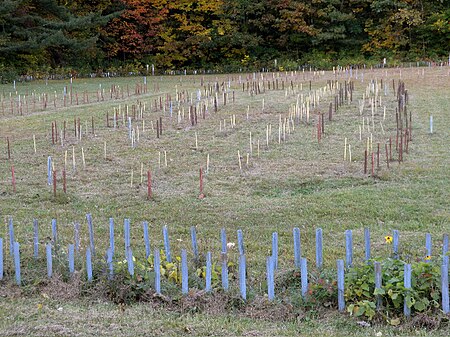Caughnawaga Indian Village Site

Caughnawaga Indian Village Site (also known as the Veeder site) is an archaeological site located just west of Fonda in Montgomery County, New York. It is the location of a 17th-century Mohawk nation village. One of the original Five Nations of the Iroquois League, or Haudenosaunee, the Mohawk lived west of Albany and occupied much of the Mohawk Valley. Other Iroquois nations were located west of them and south of the Great Lakes. The Mohawk had trading relationships with French colonists coming south from Quebec, with Dutch based in Albany, and with the later English who took over Dutch territory. Under pressure from the French in the late 17th century, some Mohawk moved to other areas. Some who had converted to Catholicism relocated to mission villages near Montreal and to the west along the St. Lawrence River. Because most of the Mohawk in the New York and Pennsylvania areas were allied with Great Britain during the American Revolutionary War, they were mostly forced out of New York when Britain ceded its territory in the colonies to the new United States. The Crown provided some land in compensation at what became the Six Nations Reserve of the Grand River, Ontario. This former village site was discovered in 1950 by Rev. Thomas Grassmann. It is the only Mohawk village site in the country to have been completely excavated for archeological studies.
Excerpt from the Wikipedia article Caughnawaga Indian Village Site (License: CC BY-SA 3.0, Authors, Images).Caughnawaga Indian Village Site
Caughnawaga Village Trail (Blue), Town of Mohawk
Geographical coordinates (GPS) Address Nearby Places Show on map
Geographical coordinates (GPS)
| Latitude | Longitude |
|---|---|
| N 42.954988888889 ° | E -74.392997222222 ° |
Address
Caughnawaga Village Trail (Blue)
12068 Town of Mohawk
New York, United States
Open on Google Maps





